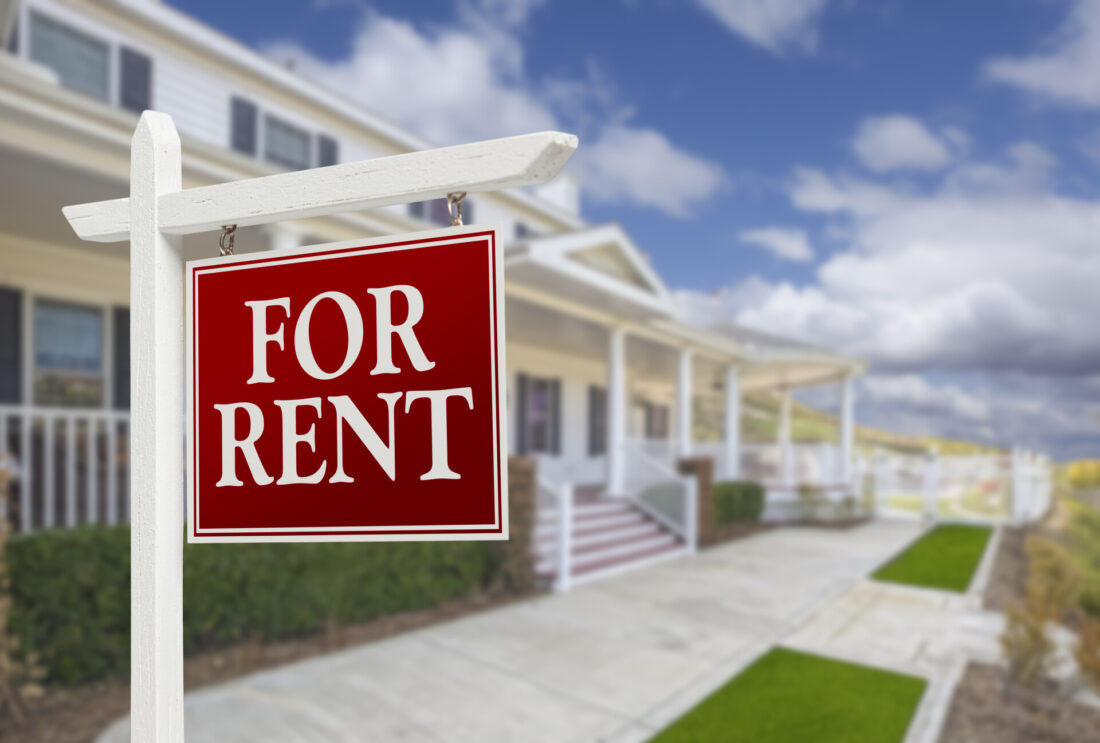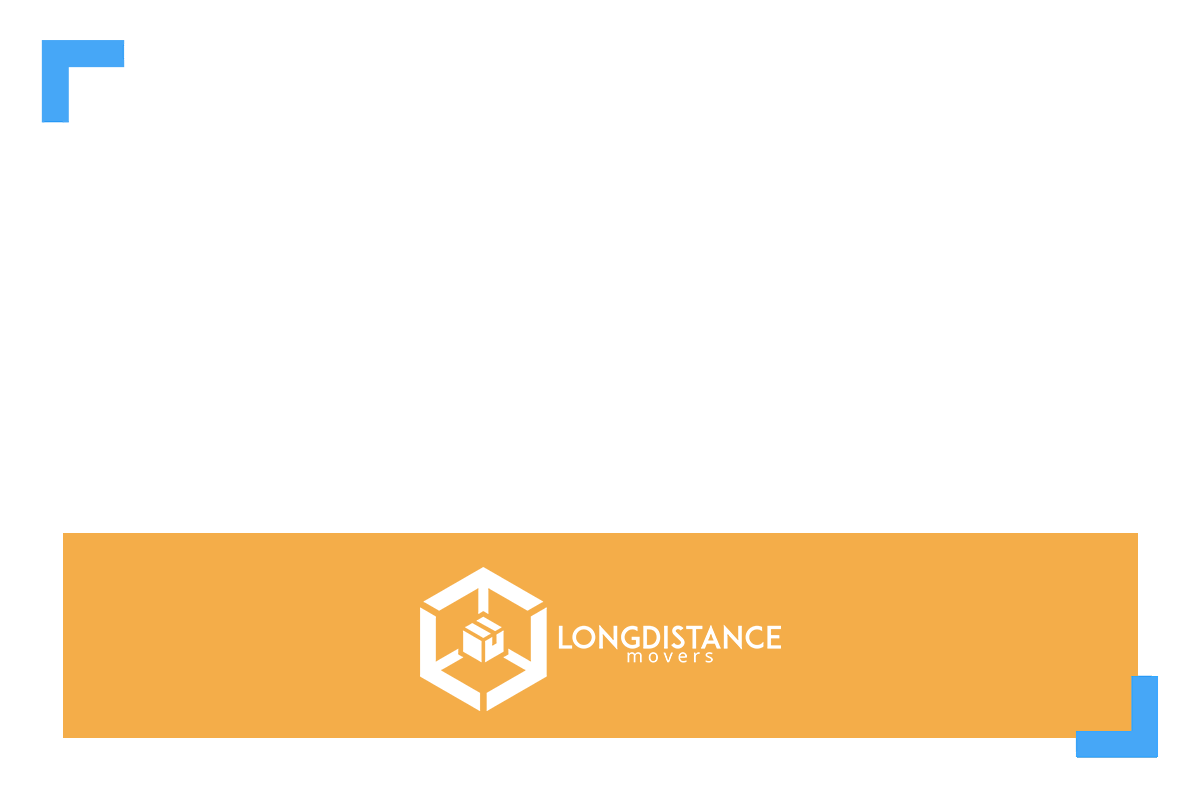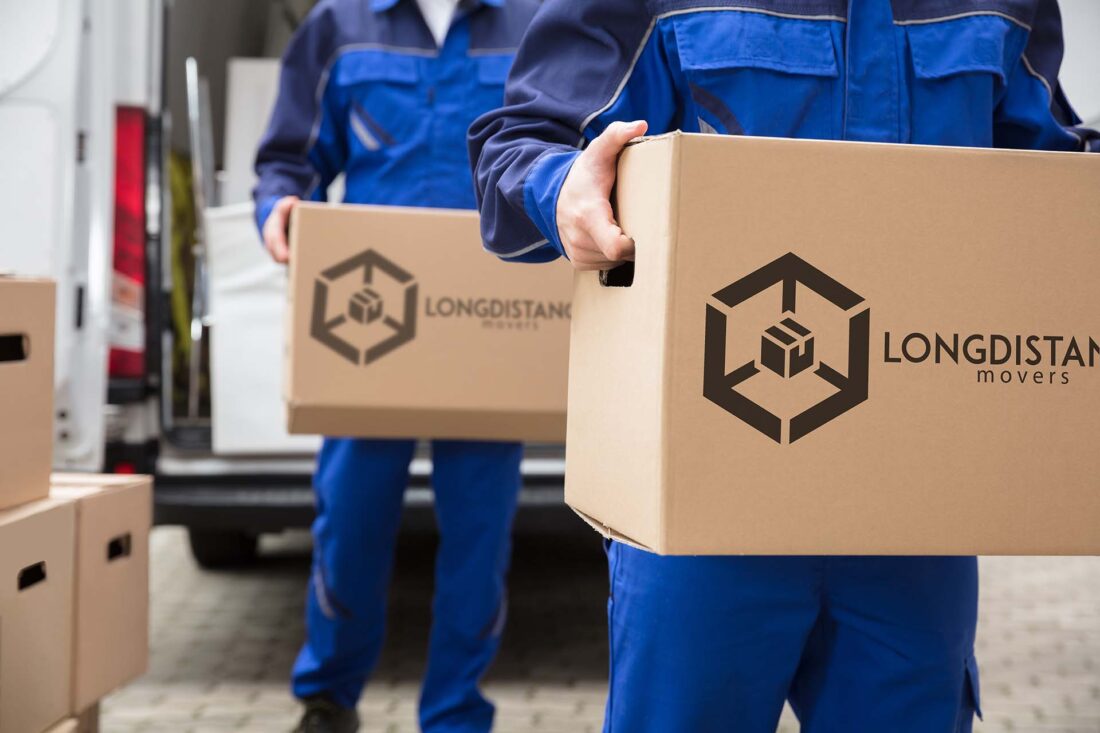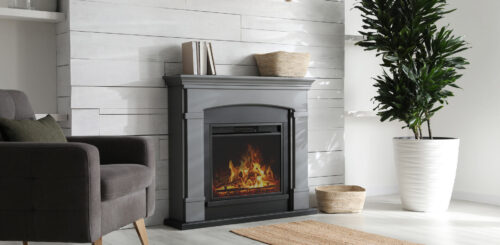The decision to uproot your life and relocate can bring unique challenges, one of which is determining what to do with your current home. Have you considered converting your homeowner status into that of a landlord? Let’s explore the ins and outs of how to rent your home when moving, including practical tips for a smooth transition.


How to Rent Your Home – Start by Preparing
As you embark on this new chapter, learning how to rent your home before moving is crucial to ensuring a smooth transition. If you’re moving from a small town to a big city, it’s essential to understand how to move effectively and efficiently.
The first step is to prepare your home for the rental market. This involves decluttering, deep cleaning, and addressing any necessary repairs or maintenance. By taking the time to make your home attractive to potential tenants, you increase your chances of securing a reliable renter and a seamless shift to your new role as a landlord.
Preparation Tips for Renting Your Home
When preparing to rent your home, consider the unique challenges you may face, such as moving with pets or deciding what to do with old appliances. One helpful tip is to create a pet-friendly space in your new home, ensuring your furry companions adjust well to their new environment.
Additionally, consider donating old appliances to local charities or recycling centers, as this will clear space in your home and contribute to a good cause. Besides these quick tips, here are some others on how to prepare your home for rent:
- Assess your property – take a thorough inventory of your home’s condition, noting necessary repairs, updates, or improvements,
- Depersonalize and declutter – remove personal items, family photos, and excessive decorations to create a neutral space and make your property appear more spacious and inviting,
- Deep clean – a clean and well-maintained home is more appealing to prospective tenants. Don’t forget to address any lingering odors, especially if you have pets,
- Ensure safety and compliance – review local safety regulations and ensure your property is up to code. This may include installing detectors, securing railings and stairs, and becoming compliant with rental or licensing requirements,
- Upgrade and modernize – consider making cost-effective upgrades to increase your property’s rental value, like updating appliances, installing energy-efficient fixtures, or repainting walls,
- Create an inventory – document the condition of your home and its contents before renting it out. This inventory will be a reference when assessing potential damage or wear and tear during a tenant’s stay. Include photographs and detailed descriptions.
How to Rent Out a House and Determine a Fair Price
Determining a fair price is crucial when learning how to rent a house. To do this, research local rental costs, consider the unique features of your property, and factor in any relocation hacks you’ve discovered along the way.
Things to consider when relocating, such as the cost of living and the local job market, can also influence the rental price of your property. By analyzing this information, you can set a competitive and fair price that attracts potential tenants.
How to Rent a Room In Your Home
Starting your rental journey by renting a room in your home instead of the entire place is a popular option for those seeking additional income; that’s a great way to make extra money for the move and get into the role of a landlord.
Even if you’re downsizing and looking for small apartment ideas, renting a room can offset the costs of your new living situation. Downsizing still costs, whether you’re hiring cross-country movers to help you move out or doing it alone.
Start by assessing how long it takes to pack a house and set a realistic timeline for preparing the room for rent. This includes decluttering, cleaning, and making any necessary repairs. Once the room is ready, advertise it on reputable platforms and screen potential tenants carefully to ensure a harmonious living arrangement.
A House Rental Guide – How to Market Your Home for Renting
When it’s time to move away and start over, marketing your home for rent effectively is crucial to finding the right tenants and ensuring a seamless transition. Here’s a house rental guide to help you market your home successfully.
- Identify the type of tenants you’d like to attract: families, young professionals, or students. This will help you tailor your marketing strategy to appeal to their specific needs and preferences,
- Create a detailed and engaging rental listing highlighting your property’s best features, including location, amenities, and recent upgrades. Use high-quality photos and clear descriptions to make your property stand out,
- Reach a wider audience by advertising your rental on various platforms, including online rental websites, social media, local newspapers, and community bulletin boards,
- Share your rental listing with friends, family, and colleagues who may know someone needing a rental property. Word-of-mouth can be a powerful marketing tool,
- If you’re looking to rent your home quickly or during a slow market, consider offering incentives like a discounted security deposit or a rent-free first month to attract potential tenants,
- Allow prospective tenants to view your property in person or through virtual tours. This provides an opportunity for them to ask questions and visualize themselves living in the space,
- Respond promptly to inquiries and be available for viewings, ensuring potential tenants have a positive experience throughout,
- If you’re struggling to market your property or simply don’t have the time, consider hiring a property management company or a rental agent to help. This can be particularly helpful if you’re trying to sell a house without an agent and need additional support.
Don’t Forget to Screen Potential Tenants
Once you’ve effectively marketed your property and attracted potential tenants, screening them thoroughly is essential. Use house-hunting tips by professionals and new apartment checklist items from other landlords to help guide your screening process.
Firstly, you must create a rental application. It should include the applicant’s personal information, employment history, income, and previous rental references. This will provide a solid foundation for evaluating their suitability as a tenant.
You should also perform background and credit checks. This will help verify the applicant’s identity, criminal history, and credit score. This is how you can assess their reliability and financial stability.
Speak to the applicant’s previous landlords and employers to gather additional information about their rental history, reliability, and character. Request pay stubs, bank statements, or a letter of employment to confirm the applicant’s income and job stability.
When you have a candidate lined up, schedule in-person or virtual interviews to assess their compatibility with your property and expectations as a landlord. If something seems off or you have reservations about an applicant, trust your intuition and proceed with caution.


When You Find Renters, It Is Time to Sign a Rental Agreement
After diligently screening potential tenants and selecting the best candidate, it’s time to move forward with the rental agreement. This is a legally binding contract that outlines the terms and conditions of the rental, protecting both the landlord and the tenant.
Understanding what you need to rent a house and creating a comprehensive rental agreement is essential to a successful landlord-tenant relationship.
Tips for Creating a Rental Agreement
Here are some tips to help you create a rental agreement that covers all aspects of the landlord-tenant relationship, ensuring that you address what’s necessary to rent an apartment or house to someone:
- Personal information – Include the full names and contact information of all parties involved, including the landlord and all tenants,
- Property details – Clearly describe the rental property, including its address, unit number (if applicable), and any included amenities or furnishings,
- Lease term – Specify the duration of the lease, whether it’s a month-to-month rental, a fixed-term lease, or a more flexible arrangement,
- Rent amount and payment terms – Clearly state the monthly rent, the due date, and the preferred payment method. Also, specify any penalties for late payments or bounced checks,
- Security deposit – Detail the security deposit amount, how it will be held, and the conditions under which it may be withheld or returned at the end of the lease,
- Maintenance and repairs – Outline the responsibilities of both the landlord and the tenant for property maintenance and repairs, including routine tasks and emergencies,
- Rules and restrictions – Include any specific rules or restrictions that apply to the property, such as pet policies, noise restrictions, and guidelines for common areas,
- Termination and renewal – Specify the conditions under which the lease may be terminated or renewed, including any required notice periods and procedures,
- Additional clauses – Depending on your specific situation, you may want to include additional clauses addressing issues such as subletting, alterations to the property, or renter’s insurance requirements,
- Legal compliance – Ensure that your rental agreement complies with all applicable local, state, and federal laws and regulations, consulting with a legal professional if necessary.
How to Protect Yourself as a Landlord
As a landlord, it’s essential to take steps to protect yourself and your property. A rigorous screening process helps minimize the risk of renting to unreliable or problematic tenants.
One of the essential tips is to keep accurate and up-to-date records of all interactions, payments, and maintenance requests related to your rental property. This documentation can be invaluable in the event of disputes or legal issues.
If you conduct periodic inspections of your rental to identify and address maintenance issues early on, you can prevent more extensive and costly problems down the road; communicate this with the tenants.
You can also purchase a comprehensive landlord insurance policy that covers property damage, liability, and potential loss of rental income. Establish relationships with legal professionals, property management companies, and maintenance service providers to ensure you have a reliable support system when needed.
The woman in the video below explains how she protected herself as a landlord while renting out a duplex home. Her tips are realistic and helpful to any first-time landlords.
Hire Long Distance Movers to Handle the Move While You Are Putting Your House up for Rent
When relocating to another state or across long distances, like relocating for work, managing the rental process for your current home can be challenging. To alleviate stress and ensure a seamless transition, consider hiring long-distance moving services to handle the move on your behalf.
As you focus on preparing your house for rent, professional movers can efficiently pack, transport, and unload your belongings at your new destination. To stay organized during this process, create a checklist for relocating to another state that covers all aspects of your move, from updating your address to coordinating utility services.
Use All Cross Country Moving Services and Avoid Lifting a Finger
Entrusting a long-distance moving company with the entirety of your move allows you to concentrate on other aspects of your relocation, such as marketing your rental property and adjusting to your new environment.
Professional movers offer packing services that ensure your belongings are secure, reducing the risk of damage during transit. This can be particularly helpful for fragile or valuable items, as expert movers know how to prevent things from breaking.
Another thing a reputable long-distance moving company will have is the necessary equipment and experience to load and transport your belongings, reducing the risk of damage or loss.
However, there are certain items movers won’t move, such as hazardous materials, perishable goods, or plants, which may require special arrangements. Professional moving companies can recommend alternative solutions for transporting these items.
Upon arrival at your new destination, cross-country movers can help you unpack and reassemble your furniture, ensuring a smooth and hassle-free move-in experience. If you require temporary storage for your belongings, many long-distance moving companies offer secure and climate-controlled storage options.
By utilizing the full range of services offered by a long-distance moving company, you can focus on preparing your house for rent and adjusting to your new home, knowing that your belongings are in capable and experienced hands.


With the Right Help, You Will Be Able to Focus On Renting a House
Renting your home before moving can seem difficult, but with the right help and resources, you can successfully navigate the process and minimize relocation stress.
By partnering with a reliable long-distance moving company like Long Distance USA Movers, you can ensure a smooth transition to your new location while securing a steady income from your rental property.
Don’t hesitate to reach out to Long Distance USA Movers for a seamless moving experience that allows you to focus on renting your house and starting a new chapter in your life.
Packing Service
Sit back and relax, we’ve got packing services covered. We use moving blankets, shrink wrap, bubble wrap and even custom wooden crating. Your stuff will be protected and carefully handled during the move.
Learn moreAuto Transport
Move your car across the country in an open or enclosed trailer – for an affordable fee. We offer car transport as a standalone service, but you can bundle it with your household move and get a hefty discount.
Learn moreStorage Services
Our spacious climate-controlled units will protect your things until the drop-off. No need to worry about them because all items are labeled and secure, and each customer gets a dedicated unit mixup isn’t possible.
Learn moreFrequently Asked Questions About How to Rent Your Home
Why Should I Rent My Home When I Move?
Renting your home when you move can provide a steady source of passive income, help you maintain property ownership for potential future use or appreciation, and offer tax benefits related to rental income and property expenses.
What Are the Benefits of Renting Out My Home?
Some benefits of renting out your home include generating rental income, potential property value appreciation, tax deductions, and maintaining ownership if you decide to return to the area or sell the property.
How Can I Prepare My Home for Rent?
To prepare your home for rent, assess the property’s condition, address necessary repairs and improvements, depersonalize and declutter the space, deep clean, ensure safety and compliance with local regulations, and create an inventory of the home’s contents.
How Do I Determine a Fair Rental Price for My Home?
To determine a fair rental price, compare yours with the properties in the area, consider the property’s location, amenities, and condition, and factor in local market conditions, vacancy rates, and your financial goals and expenses.
What Are Some Tips for Marketing My Home for Rent?
To market your home for rent, create a compelling rental listing, utilize multiple advertising channels, leverage your network, offer incentives to attract tenants, host open houses or virtual tours, and provide exceptional customer service.
How Do I Screen Potential Tenants?
Screen potential tenants by requesting a rental application, performing background and credit checks, contacting references, verifying income and employment, and conducting interviews to assess their suitability.
What Should I Include in a Rental Agreement?
A rental agreement should include personal information of all parties, property details, lease terms, rent amount and payment terms, security deposit, maintenance and repair responsibilities, rules and restrictions, termination and renewal conditions, and any additional clauses relevant to your specific situation.
How Can I Protect Myself as a Landlord?
Protect yourself as a landlord by conducting thorough tenant screening, maintaining detailed records, conducting regular property inspections, obtaining landlord insurance, and building a professional support network.
What Are Some Tips for Managing My Rental Property Effectively?
To manage your rental property effectively, establish clear communication channels with tenants, respond promptly to maintenance requests, enforce lease terms consistently, and proactively address potential issues before they escalate.
What Should I Do if There Are Issues With My Tenants?
If issues arise with your tenants, communicate with them openly to understand their concerns, review the lease agreement to clarify responsibilities and expectations, consider involving a mediator or legal professional if necessary, and document all interactions and agreements to protect your interests.





